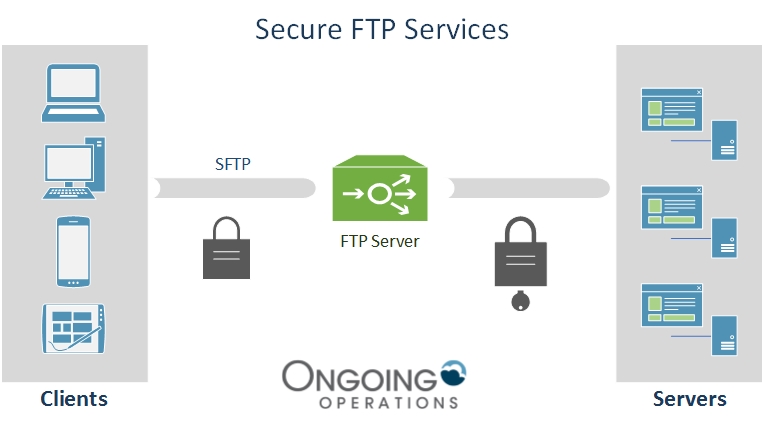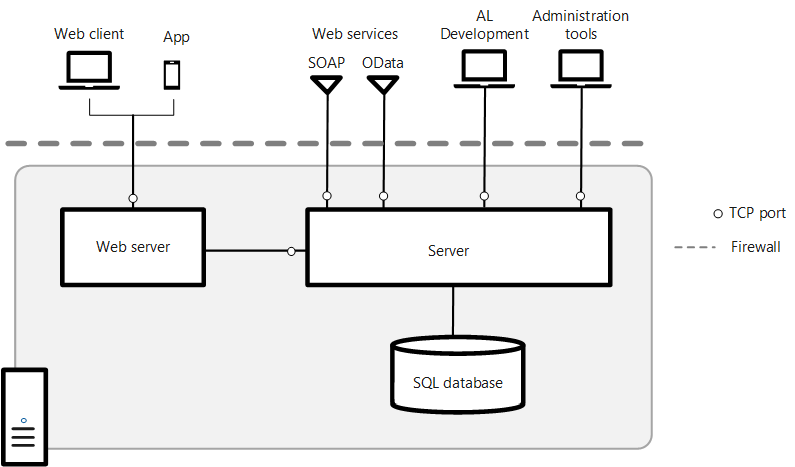
FTP is a type of user account which can be used for file transfers from one computer onto another. These accounts are typically used by web developers to access and edit website files. They can be used by anyone looking to use an online file transfer client.
What is FTP account?
A ftp is a username/password that allows users to connect to a file server using an FTP client. These accounts are usually set up by a hosting provider, but they can also be created yourself.
How do I create an FTP account?
Users of cPanel can create FTP accounts from the File section in their Control Panel. In order to create an FTP account, the first thing you need to do is select the domain the account will be linked with. Fill in all the necessary details.
A new FTP should appear on the list of Active FTP accounts at the bottom. The account can be accessed by any FTP client which supports the protocol.

How do I manage an FTP account?
In the Manage FTPAccounts section of cPanel, once an FTP-account has been created you can change or view its details. It is possible to change the password, or even delete the account.
What is a FTP user?
The login and password for a cPanel FTPS user are the same as those of a cPanel account. FTP users have the same uploading and downloading capabilities as cPanel. cPanel creates a password for an FTP account if the user forgets their password.
Creating a New FTP User
You can add an FTP user to your account by logging into cPanel and clicking on File, then FTP Accounts. On the left hand side of this webpage, click on Create New FTP User.
On the following page, select the type directory you want to grant the user. You can grant the user access to other directories by typing /. The default is public_html.
What is the FTP User's Quota?
FTP users have a quota that limits the amount of bandwidth available to them when downloading and uploading files. Once the quota has been reached, users will be unable to download or upload any files until the quota has been reset.

FTP User
The cPanel Control Panel allows you to create an FTP user and give it permission to upload and/or download files in a certain directory. This is useful for multiple websites because each user will only be able to upload and download a limited number of files every day.
FTP Users: Managing FTP Users
The login and password for an FTP account are the same as those of a cPanel account. Only one difference is they can upload and download files from only a certain folder.
Creating a FTP users is very simple, and you only need the information required by cPanel. Just enter the user name, password, as well as the directory where you would like them to be allowed access. Depending on your FTP program, you may have the option to restrict them to certain folders.
FAQ
How To Make A Static Web Site
There are two options available to you when building your first static website.
-
Using a Content Management System (a.k.a. WordPress: Download this software and install it to your computer. It can be used to create a website.
-
A static HTML website is created by you. If you have a good understanding of HTML, this is not difficult.
A professional may be able to help you create a large website.
Start with option 2.
What Kinds Of Websites Should I Make?
It all depends on what your goals are. If you are looking to build a business from your website, it may be beneficial to focus on selling online products. You'll need to build a robust eCommerce site to do this successfully.
Other popular types of websites include blogs, portfolios, and forums. Each of these requires different skills and tools. For example, to set up a website, you need to understand blogging platforms such WordPress or Blogger.
Once you have chosen a platform, it is also important to determine how you can customize the appearance of your site. There are many themes and templates that you can use for free.
After you have chosen a platform, it is time to add content. Your pages can be filled with images, videos and text.
You can publish your website online once you have launched it. Once your website is published, visitors will be able to access it in their web browsers.
What Is Website Design Software?
Web design software is used to create web pages and other digital media by graphic artists, photographers and illustrators.
There are two types of website design software available: cloud-based and desktop apps. Desktop apps can only be installed locally on your PC and will require additional software to run on your system. Cloud-based apps are hosted remotely on the Internet and do not require any additional software. This makes them perfect for mobile users.
Desktop Applications
Although desktop applications are more powerful than those offered by cloud-based services, they may not be necessary. Some people prefer to only use a desktop program because it is easier and more convenient. Some people prefer to use the same tool, regardless of whether it is on a phone or a laptop.
Cloud-Based Solutions
A cloud-based solution is a good choice for web designers who are looking to save money and time. These services make it possible to edit any type document from anywhere with an Internet connection. This means you can use your tablet to do some work while you wait for your cup of coffee to brew.
If you decide on a cloud-based solution, you will need to purchase a license. However, additional licenses are not required to upgrade to a newer version.
These programs are available for web page creation if you have Photoshop or InDesign, Illustrator, and other Adobe products.
Statistics
- At this point, it's important to note that just because a web trend is current, it doesn't mean it's necessarily right for you.48% of people cite design as the most important factor of a website, (websitebuilderexpert.com)
- Is your web design optimized for mobile? Over 50% of internet users browse websites using a mobile device. (wix.com)
- It enables you to sell your music directly on your website and keep 100% of the profits. (wix.com)
- When choosing your website color scheme, a general rule is to limit yourself to three shades: one primary color (60% of the mix), one secondary color (30%), and one accent color (10%). (wix.com)
- Did you know videos can boost organic search traffic to your website by 157%? (wix.com)
External Links
How To
How can I start as a UI Designer
There are two routes to becoming a UI Designer:
-
You can also go to school and get a degree as UI Design.
-
You can go freelance.
You will need to complete four years of college or university study if you plan to continue your education. This includes computer science, psychology, business, and art.
You can also enroll in classes at state universities or community colleges. Some schools offer no tuition, while some charge tuition.
You will need to find work after graduation. If you plan to work for your own business, you need to establish a client base. It is essential to establish a professional network so other professionals know you exist.
You can also look for opportunities to intern at companies that specialize in developing web applications. Many companies hire interns to gain work experience before hiring full-time workers.
A portfolio will help you get more work once you have established it. You should have work samples and information about the projects you worked on in your portfolio.
It is a good idea for potential employers to receive your portfolio via email.
Freelancers need to promote themselves. You can post your services on job boards, such as Guru, Indeed, Guru or Upwork.
Freelancers receive assignments often from recruiters who post open positions online. These recruiters search for qualified candidates to fill positions within specific industries.
These recruiters will typically give the candidate a project brief that outlines the position's requirements.
Freelancers are not required by law to sign any long-term agreements. If you are looking to make a move, however, it is advisable to negotiate an upfront payment.
Designers prefer working directly with clients over working through agencies. Although this might seem like a great idea, many people lack the necessary skills.
Agency workers have a deep understanding of the industry in which they are working. They also have access to specialized training and resources that allow them to produce high-quality work.
Aside from these benefits, agency workers are often paid a higher hourly pay.
Working with an agency has the downside of not being able to contact your employer directly.
As a UI designer you need to be motivated, creative, flexible, detail-oriented and communicative.
It is also important to have great verbal and written communication skills.
UI designers are responsible to design websites using user interfaces (UI) as well as visual elements.
They are also responsible in ensuring that the site meets all users' requirements.
This involves understanding the information users need and how to make your site work.
To create wireframes, UI designers can use a variety of tools. They use wireframing to help them visualize the layout of a webpage before they start designing.
There are many wireframe templates available online. Anyone can create their own wireframes.
Some designers focus solely on UI design, while others combine UI design with graphic design.
Photoshop is a tool used by graphic artists to edit images.
Adobe InDesign is then used to layout pages and layouts.
Photographers capture images using digital cameras or DSLRs.
The photos are then uploaded to a photo editing software where text captions, filters and other effects can be added.
The photographer saves the image as a compatible file format for the website.
It is crucial to consider all aspects when designing a website.
This includes research and planning, wireframing, prototyping testing, coding, content creation and publishing.
Research – It is essential to do extensive research before you begin a new project.
Planning – After you've done your research you'll be ready to develop a plan.
Wireframing - A wireframe is a preliminary sketch of a web page or application.
Prototyping-Prototypes ensure that the final product matches your initial vision.
Testing - It is important to test the prototype several times in order to make sure it works.
Coding - Coding refers to the process of writing computer code.
Content Creation – Content creation includes everything, from the writing of copy to managing social networks accounts.
Publishing involves uploading files to a server, and making sure the site is accessible.
You'll need to be able to understand the different projects you work on as a freelance UX/UI Designer.
One example is that some companies only need wire frames, while others need complete prototypes.
Depending on which type of project you accept you might be asked to do specific tasks.
For example, if you're hired to create wireframes, you might be expected to create several wireframes over time.
You may need to develop a functional version of the site if you are hired to build a prototype.
Strong interpersonal skills are important regardless of the project type.
Since most clients hire freelancers based on referrals, you must build solid relationships with potential employers.
A communication skill is essential, both verbally or in writing.
A portfolio is an essential part any freelancer's arsenal.
It showcases your work, and demonstrates your ability deliver high-quality outcomes.
This can be done online by creating a portfolio.
It is a good idea to look for websites that are similar to yours to get you started.
Then, search these sites to see how each one presents its services.
Once you've identified the best practices, it is time to start implementing them.
You can also include links to your portfolio in your resume.